If you’re looking to transform your living space with greenery, you’ll find that plants offer endless creative possibilities beyond basic potted arrangements. From stunning vertical gardens that maximize wall space to strategic plant clusters that create visual drama, there’s an art to incorporating nature into your home’s design. The following innovative approaches will help you elevate your plant decoration game while addressing common challenges like limited floor space and lighting variations.
Contents
- 1 Create a Living Wall With Vertical Gardens
- 2 Design Eye-Catching Plant Clusters and Groupings
- 3 Transform Dead Space With Hanging Plant Displays
- 4 Style Plant-Friendly Furniture and Shelving Solutions
- 5 Mix Plant Sizes and Textures for Visual Impact
- 6 Incorporate Plants Into Room Dividers and Screens
- 7 Curate Statement Plants as Focal Points
- 8 Build a Botanical Sanctuary in Your Bathroom
- 9 Master the Art of Window Display Gardens
Create a Living Wall With Vertical Gardens
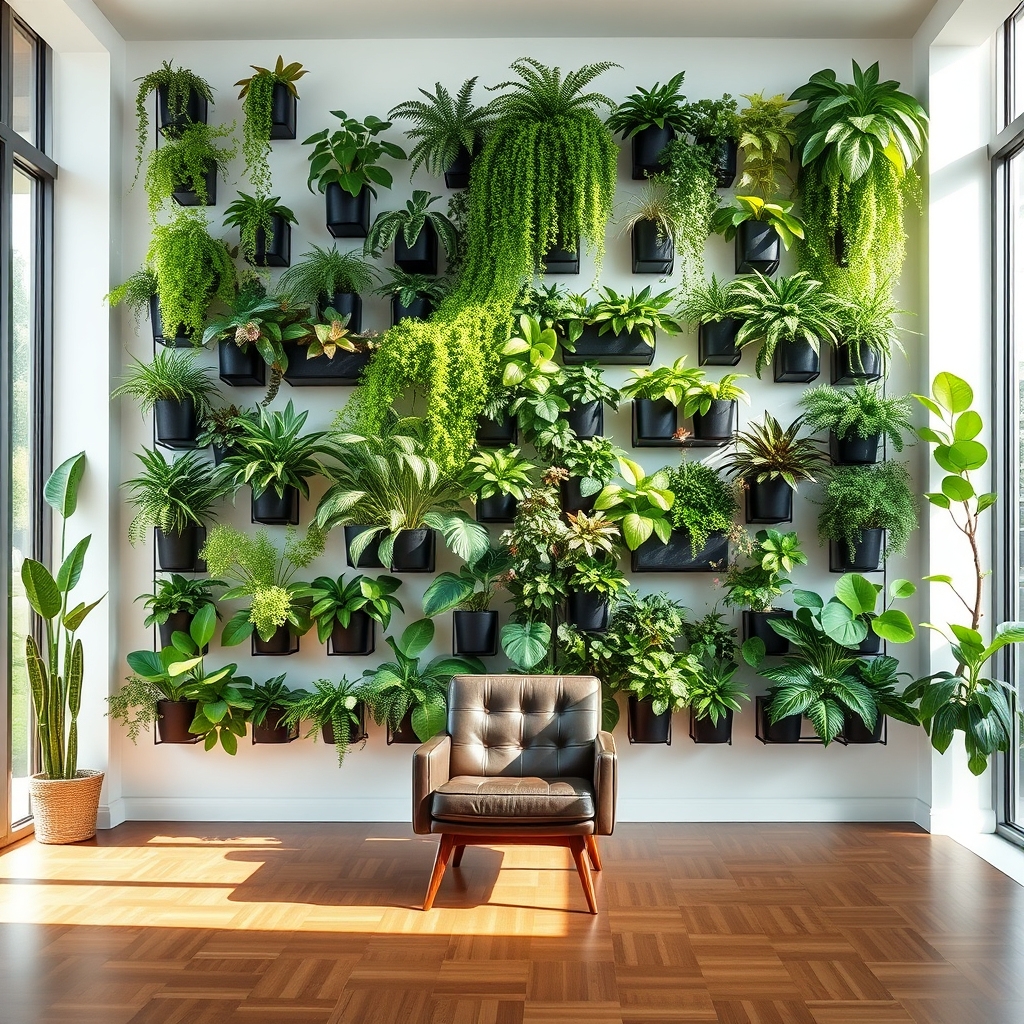
A living wall with vertical gardens transforms ordinary wall space into a lush, upward-growing display of plants and greenery.
The design features plants arranged in rows or patterns on a vertical surface, using mounted containers, pocket planters, or modular panel systems.
Plants grow outward from the wall, creating a tapestry of different colors, textures, and foliage types.
This space-saving garden solution works both indoors and outdoors, turning blank walls into dynamic, living art pieces while improving air quality and adding natural insulation.
Common plant choices include ferns, succulents, mosses, and trailing vines that cascade downward, creating depth and visual interest.
Design Eye-Catching Plant Clusters and Groupings
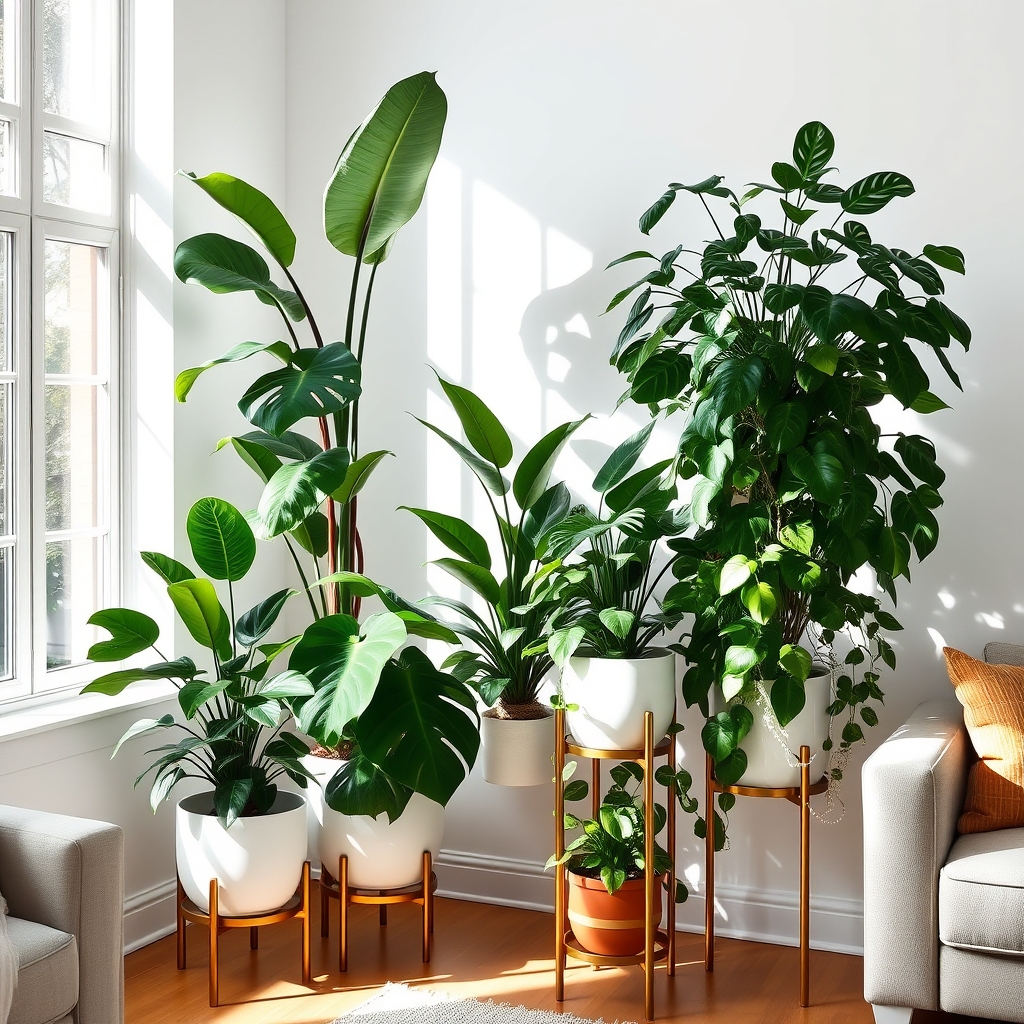
Plant clusters and groupings create visual impact by combining multiple plants of varying heights, textures, and colors in strategic arrangements. These displays typically feature a mix of tall statement plants as backdrop, medium-sized plants for the middle ground, and smaller plants or trailing varieties in the foreground.
The arrangement can be achieved using different pot sizes, plant stands, or shelving to create levels.
Key features include:
- Layered heights for dimensional interest
- Contrasting leaf shapes and patterns
- Complementary or coordinated pot styles
- Balanced spacing between plants
- Mixed scale of foliage
- Harmonious color combinations
Effective groupings often follow the “thriller, filler, spiller” principle – incorporating a dramatic centerpiece plant, fuller middle-layer plants, and cascading elements at the edges.
These arrangements work particularly well in corners, on console tables, or as room dividers.
Transform Dead Space With Hanging Plant Displays
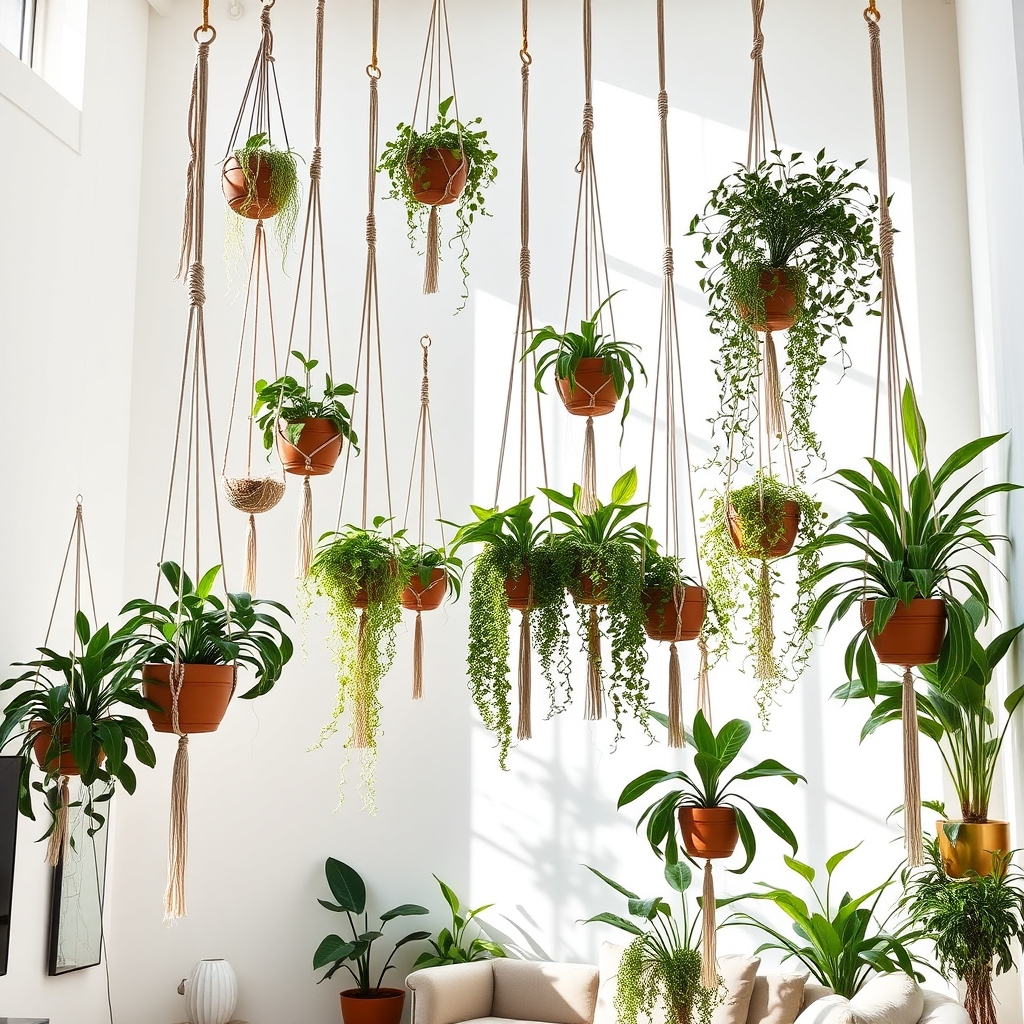
Hanging plant displays offer an innovative solution for maximizing vertical space by transforming unused areas into living gardens.
These displays typically feature plants suspended from ceiling hooks, wall brackets, or hanging rods, creating cascading greenery in otherwise empty corners, windows, or walkways.
Plants like pothos, spider plants, or string of pearls trail downward, while macramé holders and decorative containers add visual interest.
The unique feature of hanging displays is their ability to add dimension to a room without taking up floor space, effectively turning blank walls and overhead areas into dynamic, nature-filled focal points.
Style Plant-Friendly Furniture and Shelving Solutions
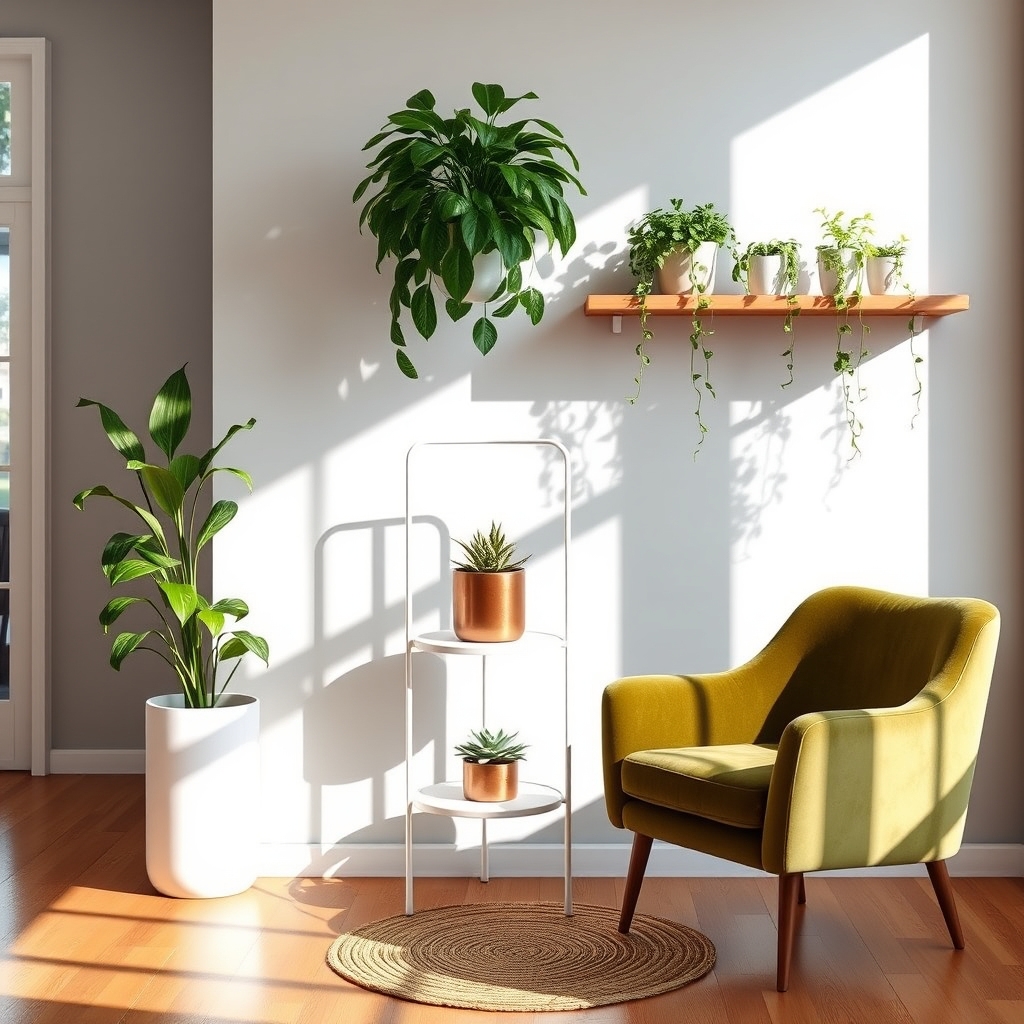
Plant-friendly furniture and shelving solutions combine functionality with aesthetic appeal to showcase indoor plants while maximizing space. These pieces include tiered plant stands, floating shelves with drainage considerations, rolling plant carts, and window-adjacent furniture designed specifically for plant display.
Key features include:
- Multiple height levels to create visual interest
- Moisture-resistant materials like powder-coated metal or treated wood
- Built-in drainage systems or removable trays
- Adjustable components to accommodate different pot sizes
- Space-saving vertical designs
- Mobile options with wheels for easy repositioning
- Strategic placement capabilities near light sources
- Decorative elements that complement both modern and traditional decor
- Sturdy construction to support heavier plants and soil weight
- Integrated grow light attachments for low-light areas
These furnishing solutions transform plant collections into intentional design elements while providing practical growing conditions for healthy plants.
Mix Plant Sizes and Textures for Visual Impact
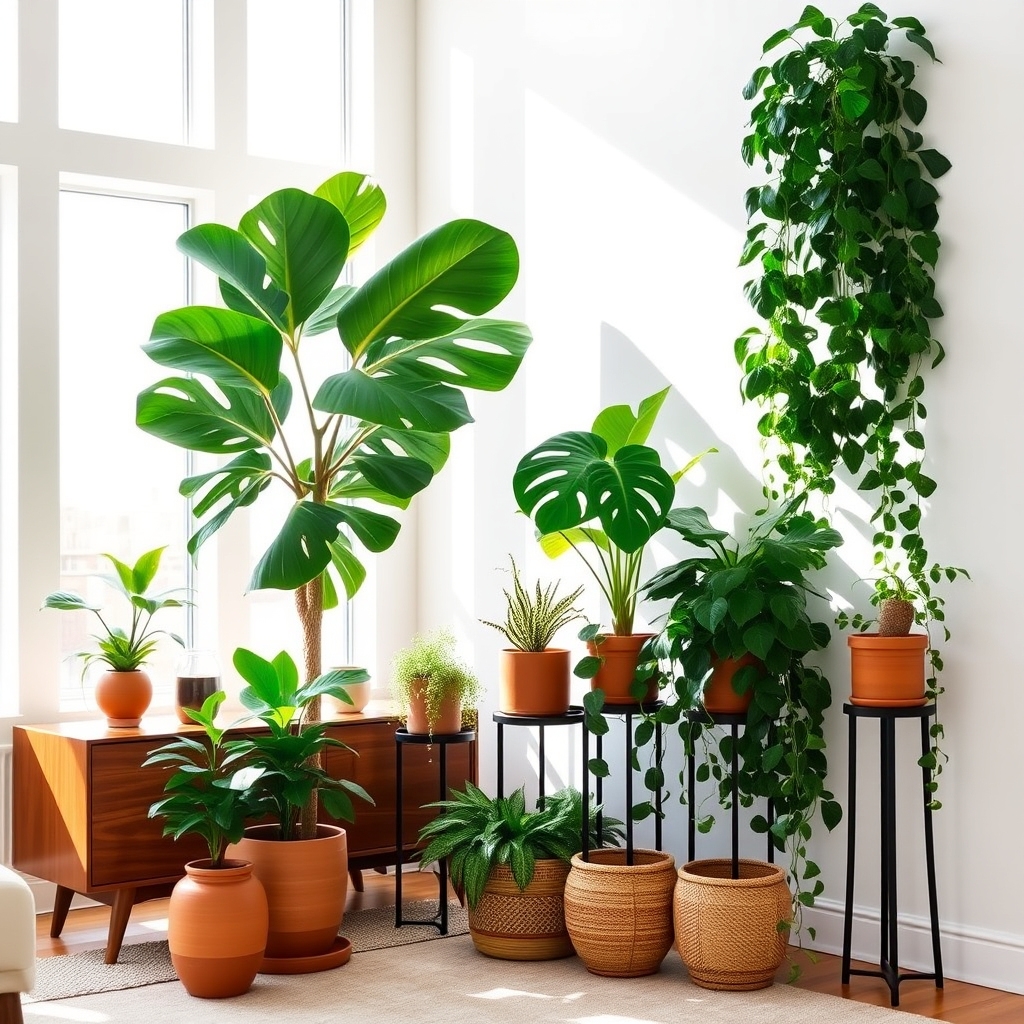
Mixing plant sizes and textures creates dynamic visual interest through deliberate contrasts and layering. Large-leafed plants like Monstera or fiddle leaf figs paired with delicate ferns or trailing vines establish depth and dimension.
Combining smooth, glossy foliage with fuzzy or rippled leaves adds tactile variety, while alternating between upright, cascading, and bushy growth patterns creates natural movement throughout the space.
Strategic placement of different heights – tall floor plants, medium tabletop varieties, and low-growing specimens – develops a professional, curated look similar to nature’s multi-level forest canopies.
This intentional variety prevents monotony and draws the eye through the room’s plant composition.
Incorporate Plants Into Room Dividers and Screens
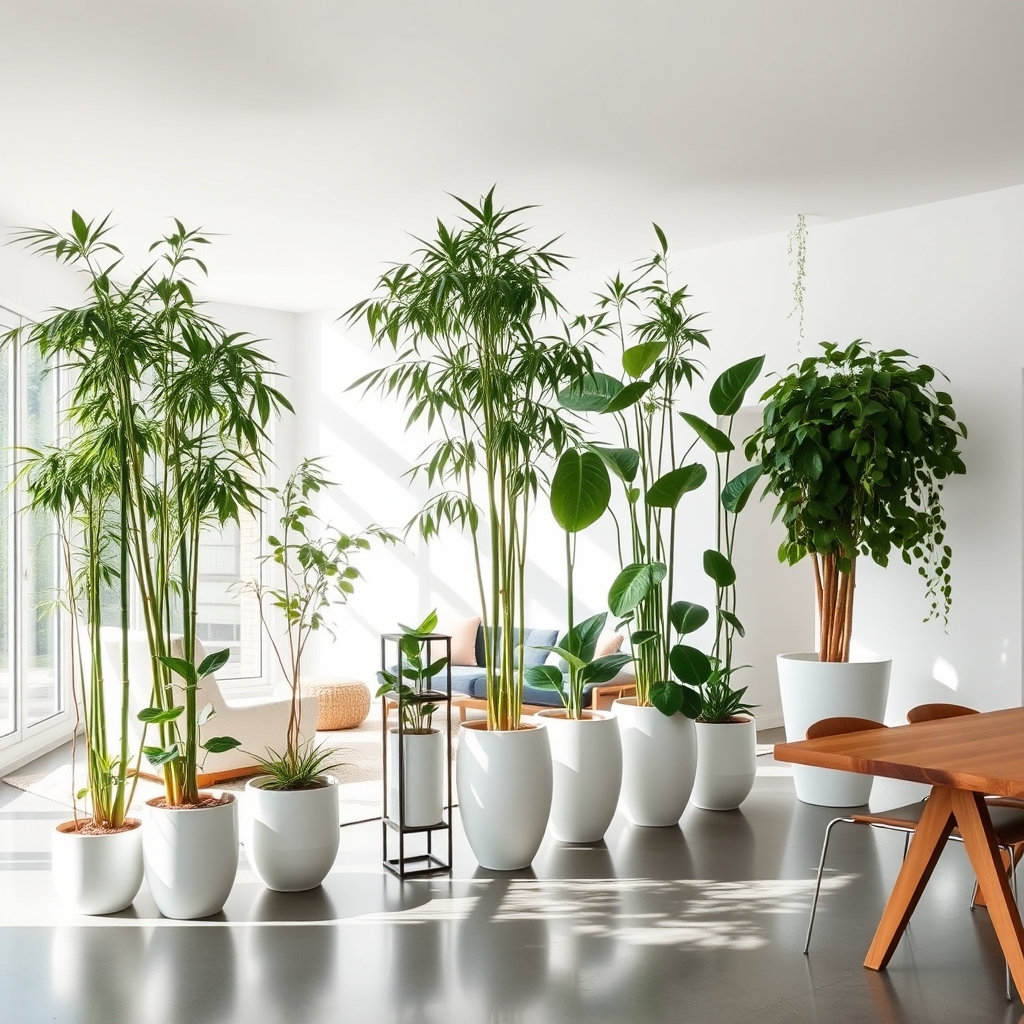
Plants as room dividers and screens create natural, living barriers that separate spaces while maintaining an open, airy feel. Tall plants like bamboo, fiddle leaf figs, or snake plants can be arranged in rows or groupings to form semi-transparent boundaries.
These green partitions can be enhanced with decorative stands, hanging planters, or modular shelving units specifically designed for displaying plants. The unique feature of plant-based room dividers is their dual functionality – they serve as both space separators and air-purifying elements while adding dynamic visual interest through varying heights, textures, and leaf patterns.
Unlike solid dividers, these living screens can be easily rearranged and adjusted as needed to accommodate changing space requirements.
Curate Statement Plants as Focal Points
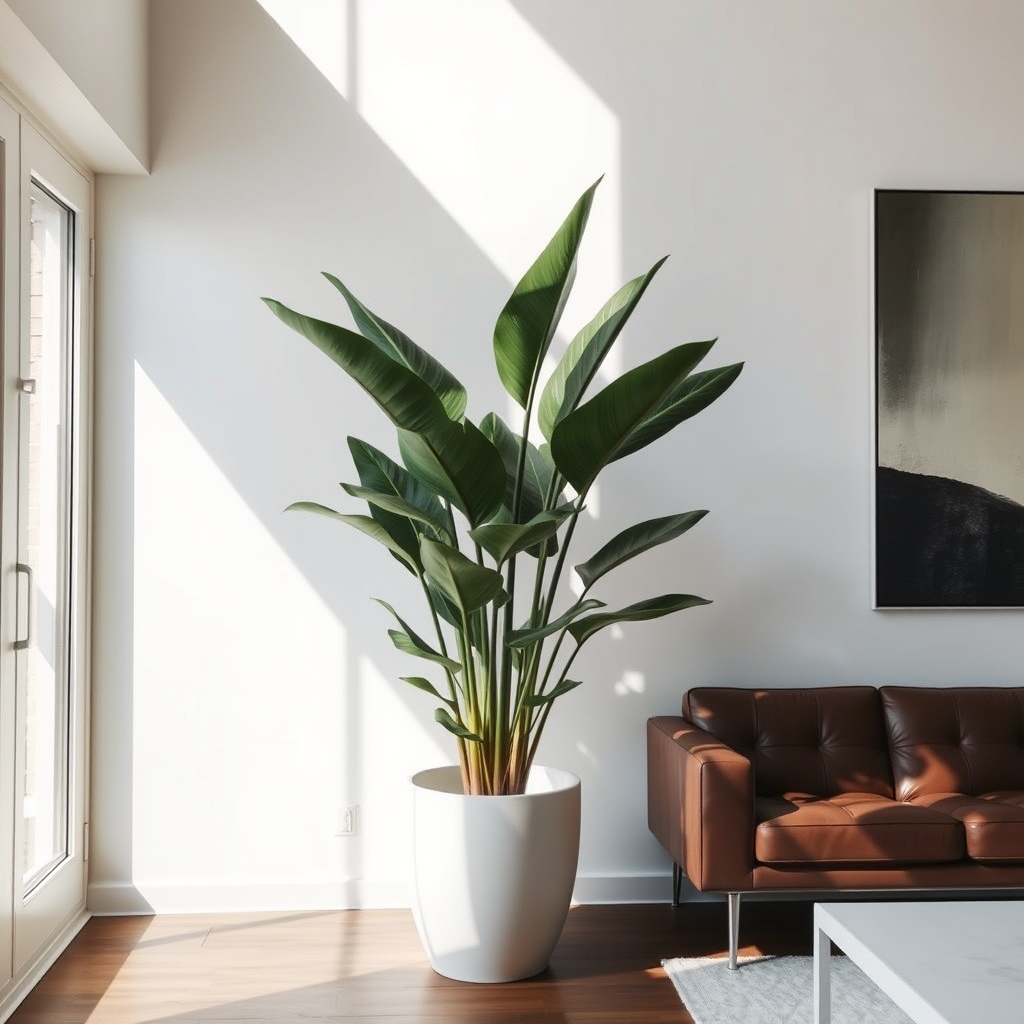
Statement plants serve as bold, eye-catching focal points in room design, typically featuring dramatic size, unique shapes, or striking foliage.
These architectural plants, such as Bird of Paradise, Fiddle Leaf Fig, or large Monstera Deliciosa, stand out through their substantial height (often 4-6 feet tall), distinctive leaf patterns, or unusual growth habits.
Positioned strategically in corners, beside sofas, or in entryways, statement plants draw immediate visual attention and create a natural sculpture within the space. Their substantial presence helps anchor room designs while adding organic drama and vertical interest to the overall decor scheme.
For maximum impact, statement plants are often displayed in minimalist, oversized pots that complement their grand scale without competing for attention.
These specimens typically require dedicated floor space and proper lighting to maintain their impressive appearance and serve their intended decorative purpose effectively.
Build a Botanical Sanctuary in Your Bathroom
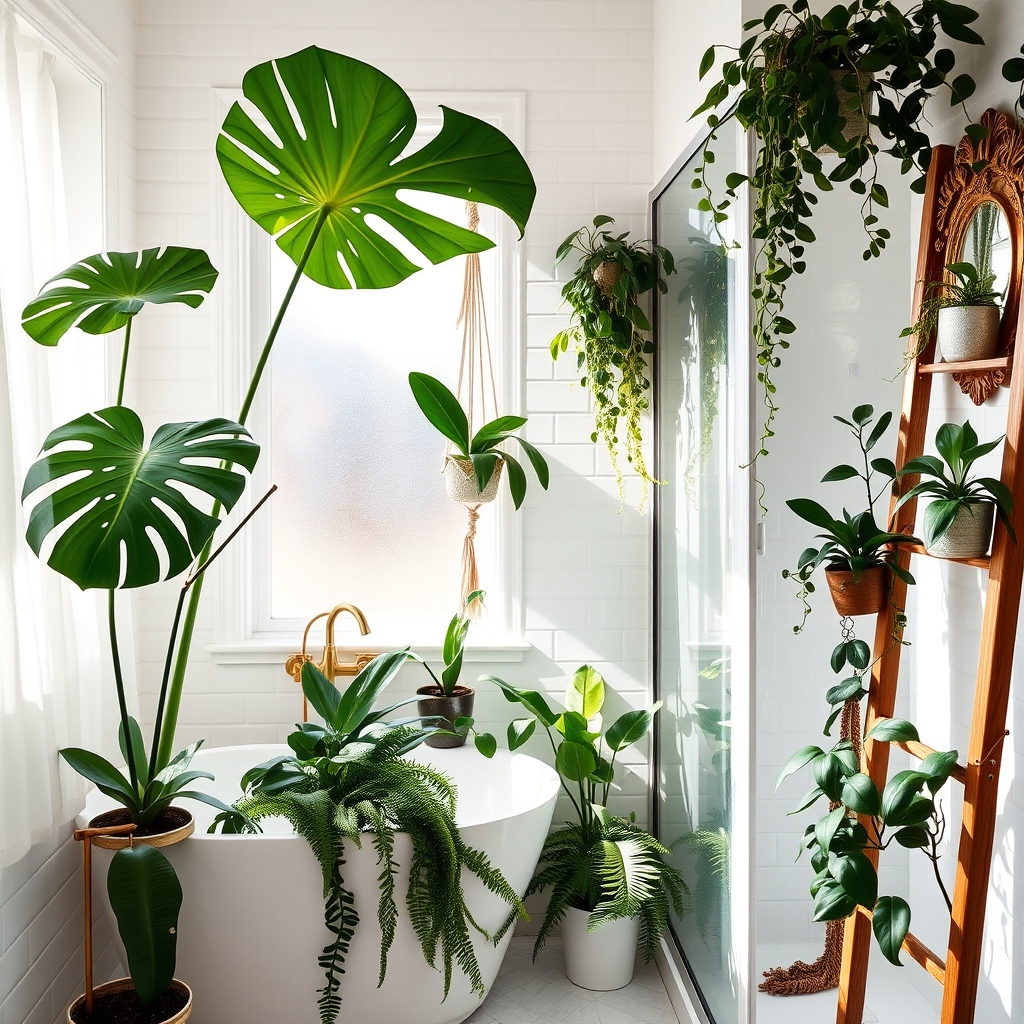
Transforming a bathroom into a botanical sanctuary creates a spa-like retreat filled with lush greenery that thrives in humid conditions.
Strategically placed plants on windowsills, countertops, shower ledges, and hanging planters maximize vertical space while adding natural elements to sterile surfaces. The combination of steam, moisture, and indirect light makes bathrooms ideal environments for tropical varieties like ferns, orchids, and peace lilies.
Plants cascade from shower rods, climb walls on decorative trellises, and cluster around bathtubs to create an immersive jungle-like atmosphere. This living decor naturally purifies air, absorbs excess moisture, and introduces calming biophilic elements that enhance the room’s relaxation potential.
Master the Art of Window Display Gardens
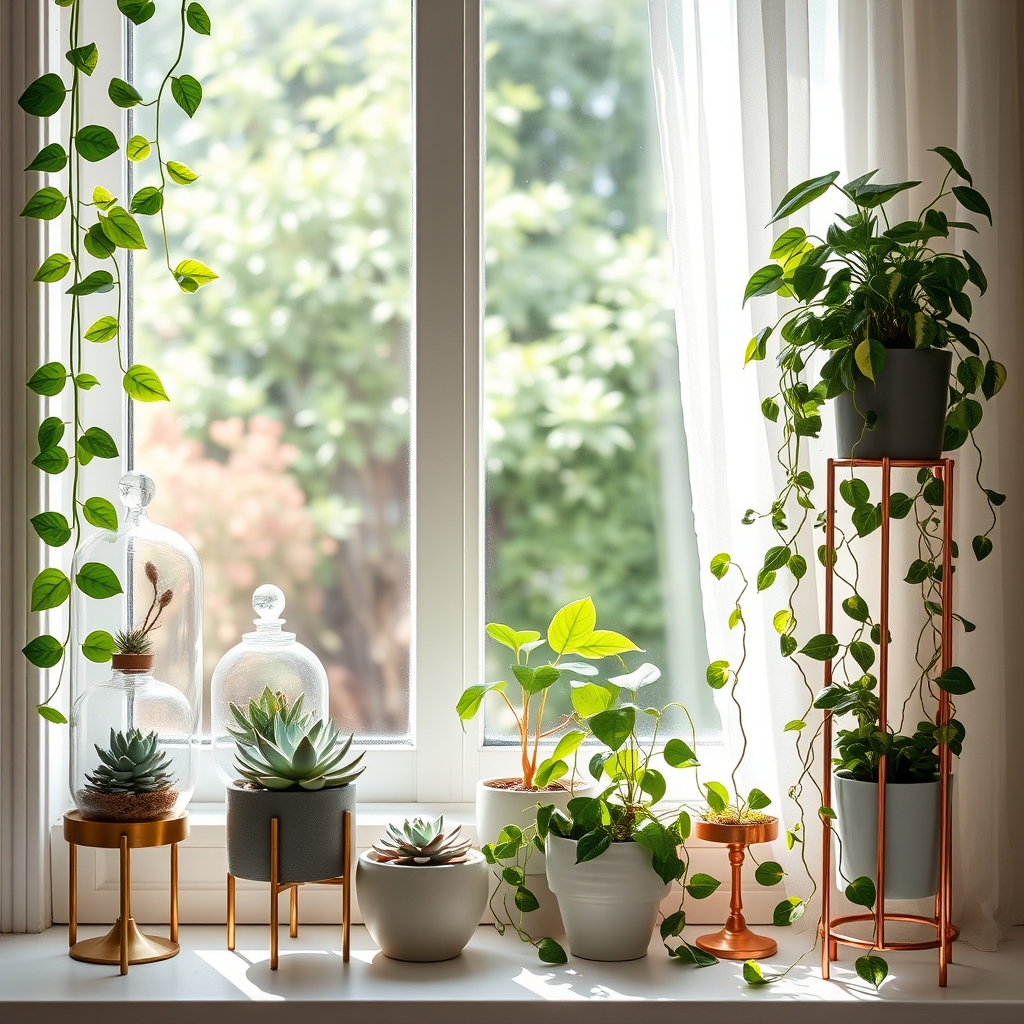
Window display gardens transform ordinary windowsills into vibrant botanical showcases, featuring carefully arranged potted plants at varying heights and depths.
These displays typically combine trailing plants like ivy or pothos with upright specimens such as succulents or African violets to create visual interest.
Small tiered shelving or decorative stands maximize vertical space, while clear glass containers and mirrored accessories amplify natural light.
Plants are strategically positioned to receive optimal sunlight exposure based on their specific needs, with sun-loving varieties placed closer to the glass and shade-tolerant species arranged behind them.
The key feature of window display gardens is their dual functionality – they serve as both an indoor garden and a living curtain, providing greenery while maintaining privacy.
The arrangement creates a natural transition between indoor and outdoor spaces, effectively framing the view while adding depth and life to the room’s interior.
